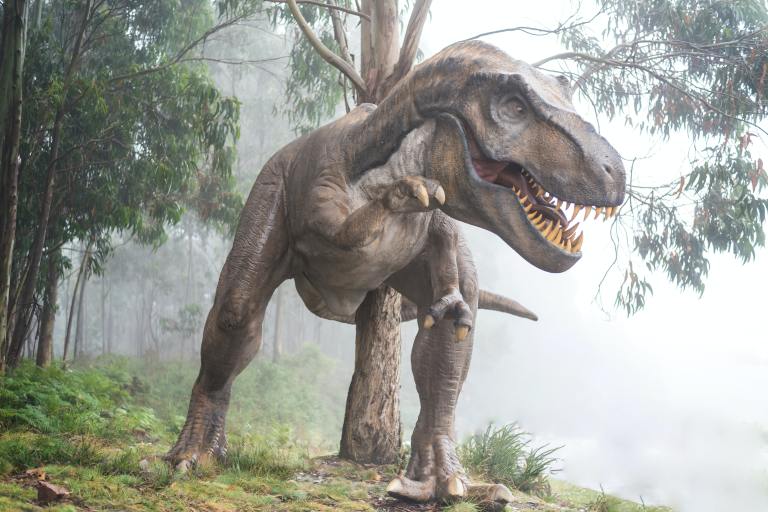The Five Lost Movie Roles of Nicolas Cage
Nicolas Cage ardently fought for what would become Salma Hayek’s ultimately forgettable performance as fiery Mexican painter, Frida Kahlo – hand-delivering the director one self-portrait in the style of Kahlo per day.
By Megan Boyle

DONKEY (“SHREK”)
The iconic role of “Donkey” was first optioned to Nicolas Cage (second in line was Jesse Eisenberg – at the time, a child displaying no outward interest in acting) before relative no-name Eddie Murphy allegedly bribed his way into the film. Cage had sworn off CGI after lukewarm reviews of “A Bug’s Life,” but his interest was piqued when DreamWorks presented him with the option of delivering his performance on a green screen. The unaltered image of his human body would be superimposed onto the CGI fairy tale kingdom. “It excited me,” Cage said, “I’ve always been drawn to the experimental, the unexpected.” Tragically, we will never know the depth and nuance Cage could’ve awakened in Donkey, due to his nearly fatal discovery of a rare yogurt-based allergy at a TCBY the night before negotiations for the role would’ve been finalized. Major DreamWorks stockholders GoGurt (the zany division of Yoplait actually owns just over one quarter of the DreamWorks enterprise) held steadfast that the line “Parfait’s gotta be the most delicious thing on the whole damn planet!” not be dropped from the film. “I couldn’t bring myself to stay with the project after the whole ‘parfait’ fiasco. But in the end I’m grateful, because this has given me the chance to raise awareness for D-BAG [Degenerative-Bacterial Allergen Genotoxicity], my condition,” Cage said. “Acting is my life, but knowing I could potentially save someone else’s? The suggestion brings me to truly other worldly levels of well-being.”
FRIDA KAHLO (“FRIDA”)
For what director Julie Taymor refers to as “the single-most emotionally draining year of my life,” Nicolas Cage ardently fought for what would become Salma Hayek’s ultimately forgettable performance as fiery Mexican painter, Frida Kahlo – hand-delivering the director one self-portrait in the style of Kahlo per day. Of the decision to go with Hayek, Taymor said, “Nic’s screen tests were flooring, truly flooring. We [film adaptor Clancy Siegal] were actually physically incapacitated for I don’t know, forty, fifty minutes after seeing the tape. Nicolas was bringing a feminine truth to Frida that made me doubt my own experience as a woman [laughs]. We didn’t think the world was ready.”
CAMERON/TYLER WINKLEVOSS (“THE SOCIAL NETWORK”)
“I wanted someone who was experienced in twin-work and of course Nic is the twin authority, hands-down. I mean, you want twins in this town? You go to Nic Cage,” director David Fincher said. “But to quote the Stones, you can’t always get what you want [pauses]. You really can’t. Not to say that Arnie [Hammer, actor who played the twins] didn’t do a fantastic job. He did. But he’s a kid. We joked around, you know, when things got difficult on set I’d tell him it’s a bitch when your first-born has to be twins, right [laughs]? Nah, but Nic’s birth canal is nice and loose, real ‘old pro.’ After I saw ‘Adaptation’ [2002 film in which Cage plays twin brothers Donald and Charlie Kaufman] my jaw was on the floor. I swore that was the only time I’d ever see Meryl [Streep] get outshined. It was really something. I actually offered [the role of Mark Zuckerburg] to Nic too, but I guess Gondry already nabbed him up for that MySpace movie.”
T-REX (“JURASSIC PARK”)
“T-Rex,” arguably the seminal digital-animatronic figure of 1994, set the bar high for the future of special effects in filmmaking – or so thought the world until Steven Spielberg came clean about the film’s true star, Nicolas Cage. In a November 2010 interview with the Wall Street Journal, Spielberg deemed Cage a “real actor’s actor” and divulged that he agreed to play T-Rex only if his identity remained anonymous, even to fellow cast members, as a part of his extreme take on the Method Acting process. “What initially drew me to the character, you know, what made me think ‘Yes, I actually can do this’ – was that I knew that fundamentally, T-Rex and I saw the world in the same way,” Cage said. “Our prey-seeking vision systems are both largely centered on motion sensing.” To prepare for the role, Cage transported himself back in time to the Cretaceous period, near the coast of what would be considered modern-day Acapulco, Mexico. It was there that he “shadowed” a female Tyrannosaurus Rex, who he came to call “Rosa,” for seven months. When asked for more comment on the experience, Cage only offered, “I’m a better human being because of my time with her. Hay más tiempo que vida. [Mexican proverb which loosely translates to ‘there is more time than life’].”
SEAN ARCHER (“FACE/OFF”)
Production was almost halted for this 1997 thriller due to a scathingly bitter yet oft-media-overlooked debate between Cage, co-star John Travolta, director John Woo, and first team of screenwriters (names withheld by request). In the film, detective Sean Archer and super-criminal Castor Troy have their faces surgically swapped in order to assume each other’s identities. The “Sean Archer” character (played by Travolta in the film) was originally written for Cage, and newcomer Harrison Ford was signed on to play Castor Troy (the role Cage would eventually inherit). Three days after an unexplained on-set visit from John Travolta (who Woo introduced to the cast and crew as his “college roommate,” even though Travolta never went to college), Woo mysteriously hired an entirely new crew, team of writers, and Travolta himself. Harrison Ford was fired and Cage was downgraded to the role of Castor Troy. It has been suggested that the rumored mind-control techniques employed by ministers in the Church of Scientology (of which Travolta is a member) might have had something to do with Woo’s “set cleaning,” but a unanimous opinion remains inconclusive.
When filming re-started in 1988, Cage’s revised contract ensured that scenes between he and Travolta were to be filmed no less than ninety hours or two hundred thirty-six miles apart, contributing to the film’s record-setting nine year shooting period. “I used the rage to my advantage,” said Cage of the experience, “and I’m proud of the work I did. Sometimes in this business you just need to play the hand that’s dealt to you. But that being said, I will absolutely never work with John [Woo, presumably Travolta as well] again.” Woo maintains that Cage “simply wasn’t right” for the role, but gives no other comment on the matter. ![]()





